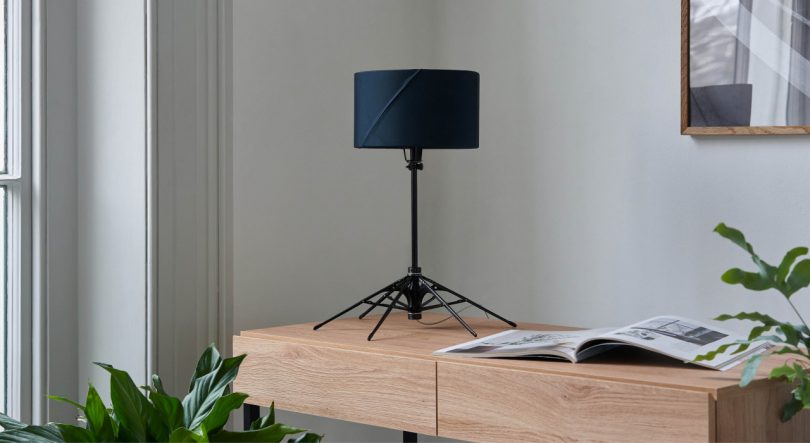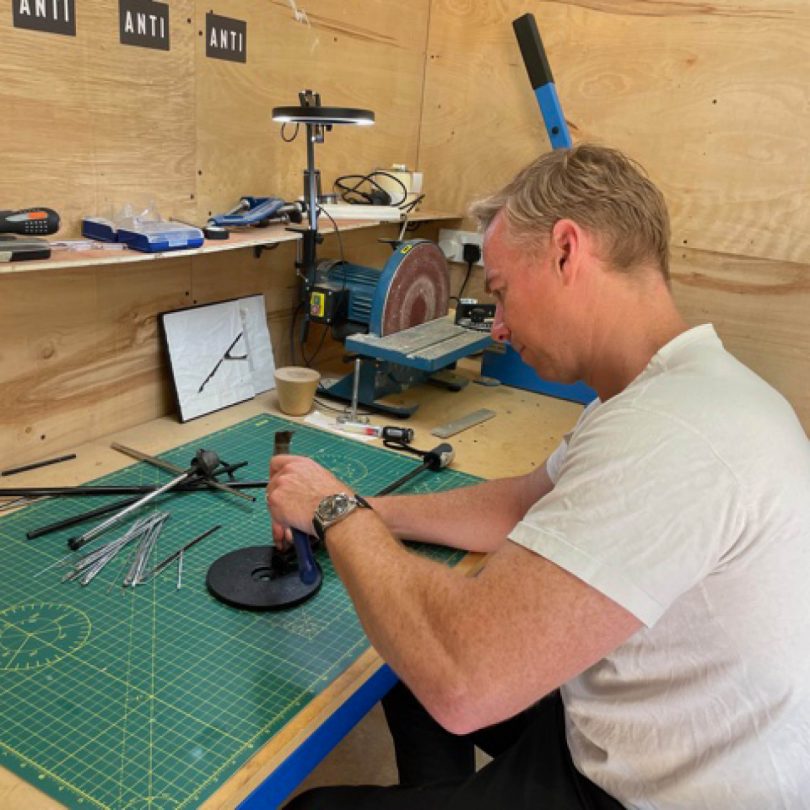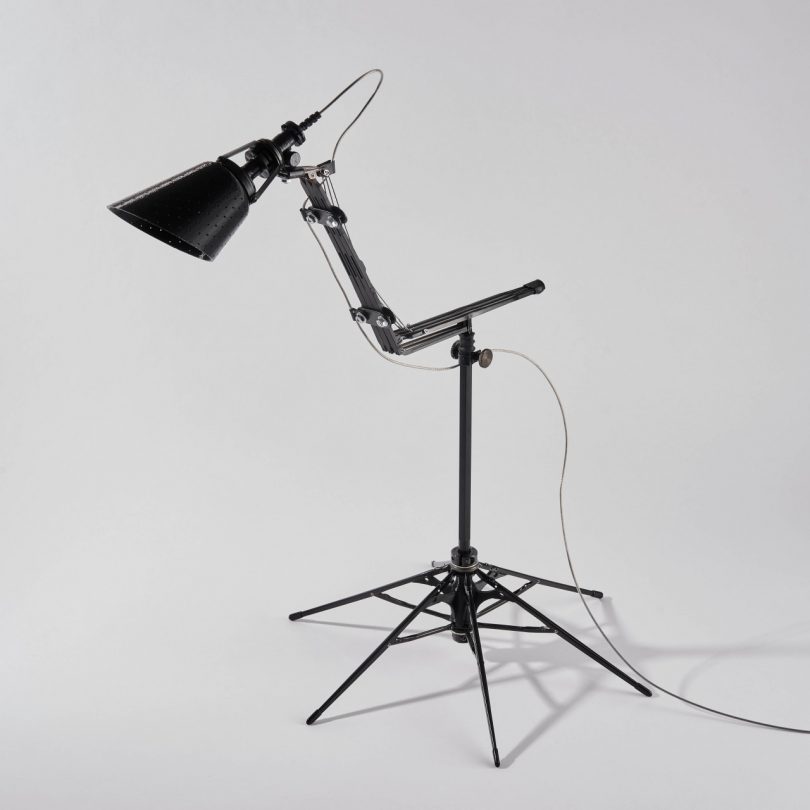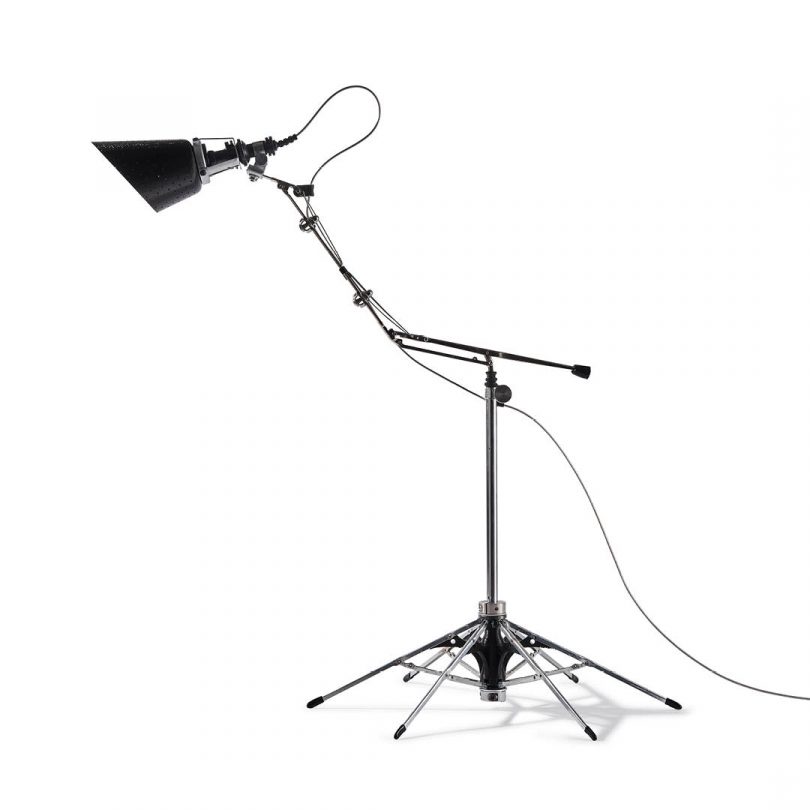We’ve all experienced that frustrating moment when an umbrella gets blown inside out, the force of the movement breaking the spindles and rendering it useless. The thing is that the majority of umbrellas are simply not designed to last, with an average lifespan of just six months. In order to turn this frustration into something positive, Anti takes discarded and broken umbrellas, disassembles them, and upcycles them into desk and table lamps. We spoke to UK-based founder and CEO Mark Howells to find out more.
Tell me a little bit about your childhood, education and background in terms of how you first became interested in creativity, design and sustainability.
I grew up In Hertfordshire in a working class family. My mother can draw and paint and my father is very musical; writing and performing electric and acoustic guitar-based music to this day at 70 years of age. My first exposure to design was via a foundation course in art and design at Watford in the 1990s. I was drawn towards the traditional arts as opposed to design, until I was asked by a tutor, who ran a 3D Design class, to select an object from a series of waste objects she had scavenged from a beach and produce a new product. I chose a section of a washed-up bicycle tire and made a watch strap that buttoned over the tire tread. I loved the process of learning to unsee the original utility of an object and unlocking a new purpose unseen by anyone else before. This led to an explosion of designs using waste. At the time I had a cleaning job in the evenings at a very large office and I would collect items of interest that had been discarded in bins – in particular, computer components – and repurpose them. It was these designs that secured me a place on an Industrial Design degree at Cardiff University. Although I learned a huge amount, I really had no real interest in becoming an Industrial Designer – the assembly line approach of the time was a far cry from the work I had been doing to secure my position on the degree course in the first place. This was the ’90s and sustainability wasn’t a mainstay of the curriculum. I decided to take the drafting skills I had developed and head towards engineering. I worked for various environmental consultancies, which led me to building and land surveying, eventually as a board-level director of a successful surveying practice. In this role, I gained exposure to starting new business units and small businesses – which inspired me to fulfill a long-harbored desire to return to sustainable design.
How would you describe your project/product?
Anti’s first collection is upcycled lamps made of discarded umbrellas that were otherwise destined for landfill. The collected umbrellas are disassembled into their separate materials groups (e.g. plastics, metals, nylon) and are made into desk and table lamps. Over 1 billion umbrellas are made each year but are not designed to last, with an average lifespan of just six months. Anti addresses a waste issue by designing with waste, not creating it – and the new products are easier to disassemble at end-of-life than the umbrella was in its original state. This is the first waste stream we are concentrating on, but there will be others. One of our key focuses is to design repeatable upcycled products that can be made/manufactured at scale. The more we sell, the more waste we reuse, and the more good we can do.
What inspired this project/product?
After living in London and Tokyo, I became very aware of the wastage around umbrellas. In Tokyo, umbrellas are everywhere, you see endless rows of broken umbrellas at railway stations and outside shops. On a typical rainy day in Tokyo over 3,000 umbrellas are handed in to lost property, London underground deals with a similar problem. Our research suggests as many as one billion umbrellas are broken, lost or discarded each year worldwide. Umbrellas are just one example of an everyday product that has an important utility and value, but is flawed. It solves one problem but causes another. In the case of umbrellas it keeps us dry, and is portable, cheap and available on every street corner, but is made of different material types and so it’s difficult to disassemble at the end of its life, which makes recycling at scale difficult.
What waste (and other) materials are you using, how did you select those particular materials and how do you source them?
Both lamps are made from discarded umbrellas. We have collected these over the last few years primarily from lost properties and from city streets, bins and train stations. We also use a 3D-printed recycled plastic filament for two components and several metal components that are made from recycled materials.
When did you first become interested in using waste as raw material and what motivated this decision?
The design potential of using waste has interested me since higher education, however, the first real exposure I had to the environmental impact of how we were dealing (or not dealing) with waste was when I was a junior technician at an environmental engineering consultancy. I saw how landfills were designed firsthand and even had the opportunity to see one being built. Landfills were recognized even by the landfill designers at the time to be a poor solution with many issues e.g., the plastic membranes often split or ripped leaking the toxic water (leachate) that had percolated through the waste over time and into the soil and worryingly possibly into the groundwater. To see these vast cavernous sites being built, often in areas of countryside, just felt wrong and you could really see the ‘out of sight, out of mind’ mentality we have associated with waste. The new items we purchase are made of the exact same materials we were throwing away; I have always believed that it’s our perception of what we deem as waste that needs to change. If you view any perceived waste item by its material type and form as opposed to its original utility and the stigma associated with something old or used, then it’s free to take on a new role. It’s down to us as designers to unlock this potential.
What processes do the materials have to undergo to become the finished product?
The umbrellas have to be disassembled into their individual component types and, in some cases, cleaned and repaired. The 3D-printed parts also need to be cleaned and finished. Then both lamps are primarily made through a process of assembly as opposed to manufacturing. This is also more energy-efficient.
What happens to your products at the end of their life – can they go back into the circular economy?
I encourage each customer to return our products at end of life via our Take Back scheme. We will happily take back any of the products produced at our workshop. These will be disassembled and reused as the basis for new designs or as a last resort disassembled for recycling. Having these products returned really is of great value to us. Both lamp designs are easy to disassemble, which allows us to recapture their material value very quickly.
How did you feel the first time you saw the transformation from waste material to product/prototype?
It really does feel like a kind of alchemy when you get it right. My objective Is to produce beautiful products from waste streams that at first, or even second, sight have no reference to their original purpose and utility. I know my work is done when someone suddenly realizes that what they are looking at is not what they thought, and yet it was there in front of them the whole time. To provide that surprise and joy is the best feeling.
How have people reacted to this project?
It’s been really positive so far. I think people are genuinely surprised that you can create something that looks beautiful from something that is not considered so. I’ve been particularly pleased with receiving great responses from fellow designers and sustainable designers.
How do you feel opinions towards waste as a raw material are changing?
I believe people are now more accepting of recycling and products made from recycled materials and in many cases, there’s now a demand for these. Upcycled products, however, are sometimes devalued in what people might pay for them due to the monetary tag associated with their previous life. That’s interesting because, in my opinion, the creative innovation to successfully develop an upcycled product (particularly at volume) is far more challenging, and ultimately more impressive, from both the point of view of the creative process and the end product point.
What do you think the future holds for waste as a raw material?
Ultimately, we should get to a stage where we do not see waste as rubbish. I believe circular economy principles will be the panacea to the fear and hurt we are feeling more strongly than ever towards the damage to the planet. Politicians, businesses, designers, and individuals will genuinely want to change the way we live, you can see the younger generation are already asking all the right questions and have the hunger to find the answers. Upcycling, in the sense of taking a linear lifecycle product and transforming it into a circular lifecycle product, can be a stop-gap to buy us more time until we are designing with circular principles ingrained into everything we manufacture from the outset. Developing biomimicry and biological fabrication where we can grow our products and they can safely return to the earth without the need for retrieval systems is a really exciting future. Although there is incredible progress in this area, we are, realistically, many decades from this becoming mainstream, and therefore the role of upcycling is critical to providing the time to achieve that transition.
from WordPress https://connorrenwickblog.wordpress.com/2021/08/10/anti-turns-discarded-and-broken-umbrellas-into-desk-and-table-lamps/












No comments:
Post a Comment